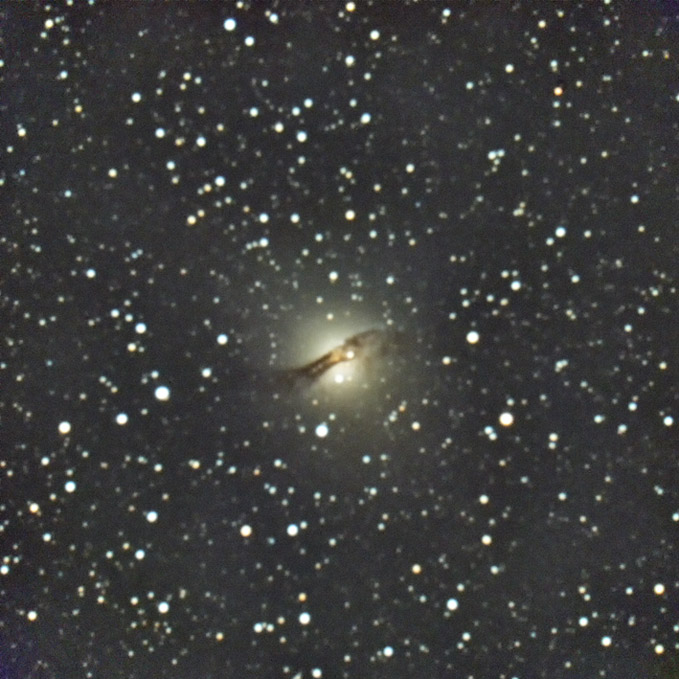| NGC5128 / Galaxy, type S0 pec |
|---|
| R.A. | 13h 25m 27.6s (2000.0) |
|---|
| Dec. | -43° 00' 31" (2000.0) |
|---|
| Apparent Size | 25.7×20.0' |
|---|
| Radial Velocity | +795km/s |
|---|
| Magnitude | 7.8 |
|---|
| Distance | 16 million light yrs. |
|---|
| Group of Galaxies | NGC5128 Group |
|---|
| Other IDs | ESO270-9, MCG-7-28-1,
ARP153, PGC46957 |
|---|
Around the time when major spring constellations like Virgo and Bootes have the meridian transit,
the galaxy of NGC5128 appears in the southern constellation of Centaurus.
The constellation makes an appearance only its upper part at Japan, which is why the galaxy can be seen in very low southern sky and it's difficult to observe.
The elliptical galaxy has an another code of radio objects "Centaurus A"; it's familiar in pictures taken by big telescopes of official observatories.
The galaxy has a very clear characteristic of a thick dark lane crossing over the center of galaxy.
The dark lane can be taken in pictures only with small telephoto lenses.
NGC5128 is emitting the powerful radio wave from the bodies divided by dark lane, an amount of radio energy equals to about 50 million times of that of our Galaxy.
Astronomers have advanced some theories of the cause of this extremely strong radio wave, for example,
existence of a huge black hole at the center of the galaxy, or an influence of the collision of two galaxies.
|

